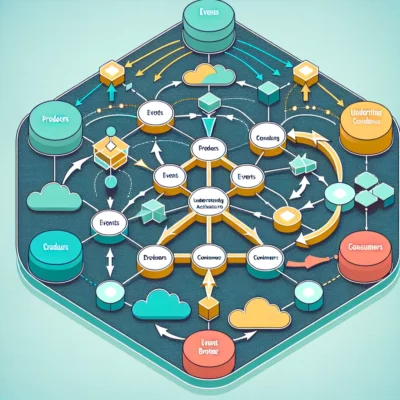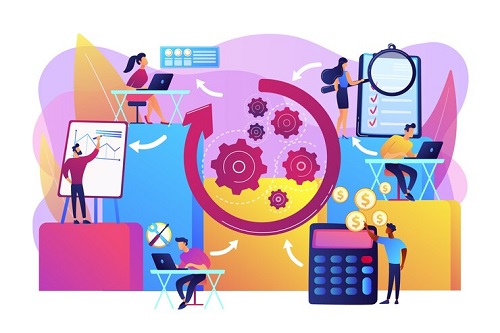In the dynamic world of cloud computing, event-driven architectures have emerged as a pivotal design pattern, enabling applications to be more responsive and adaptable. As businesses increasingly rely on cloud environments, understanding how to effectively scale these systems becomes crucial. This blog delves into the intricacies of scalability in cloud event-driven systems, offering insights and strategies to navigate this complex landscape.
Understanding Event-Driven Architectures
Event-driven architectures (EDA) are a paradigm shift from traditional request-response models, focusing on the flow of events within a system. In EDA, applications respond to events or changes in state, making them highly responsive and flexible.
Core Components of Event-Driven Systems
- Events: These are significant occurrences or changes in state that trigger responses. Events can be anything from a user action to a system update.
- Producers: These entities generate events. They can be applications, services, or even sensors in IoT systems.
- Consumers: These are the entities that receive and process events. Consumers act based on the information provided by events, leading to actions or state changes.
- Event Brokers: These intermediaries facilitate the flow of events from producers to consumers, ensuring that events are delivered reliably and efficiently.
Benefits of Event-Driven Architectures
- Responsiveness: Systems can react in real-time to changes, providing a seamless user experience.
- Flexibility: Components can be added or modified with minimal impact on the overall system.
- Scalability: By decoupling components, systems can scale independently, optimizing resource use.
Scalability Challenges in Cloud Environments
Despite their advantages, event-driven applications face unique scalability challenges in cloud environments.
Common Challenges
- Event Storming: Sudden surges in event production can overwhelm systems, leading to bottlenecks and failures.
- Latency: As events traverse distributed systems, delays can occur, impacting performance.
- Resource Contention: Competing for shared resources can lead to inefficiencies and degraded performance.
Managing State and Consistency
One of the complexities of distributed systems is maintaining state and ensuring consistency. As events are processed, ensuring that all components have a consistent view of the system state is challenging, especially when dealing with network partitions or failures.
Mitigating Scalability Challenges
To address these challenges, several strategies can be employed:
Strategies for Scaling
- Horizontal Scaling: Adding more instances of a service to handle increased load can alleviate pressure on individual components.
- Partitioning: Dividing data and processing across multiple nodes can improve performance and reduce contention.
Leveraging Cloud-Native Services
Utilizing cloud-native services and tools can significantly enhance scalability. These services are designed to handle the dynamic nature of cloud environments, offering features like load balancing, auto-scaling, and distributed data management.
Serverless Architectures and Auto-Scaling
Serverless architectures abstract away infrastructure management, allowing developers to focus on code. Coupled with auto-scaling, serverless solutions can dynamically adjust resources based on demand, ensuring optimal performance without manual intervention.
Best Practices for Optimal Performance
Designing scalable event-driven applications requires careful planning and adherence to best practices.
Guidelines for Design
- Decouple Components: Ensure that components can operate independently to reduce dependencies and improve scalability.
- Optimize Event Flow: Design efficient event flows to minimize latency and maximize throughput.
Monitoring and Observability
Continuous monitoring and observability are crucial for maintaining performance. Implementing robust monitoring solutions can help identify bottlenecks and inefficiencies, allowing for proactive adjustments.
Testing and Simulation
Regular testing and simulation of load scenarios can help anticipate potential scalability issues. By simulating peak loads, teams can identify weaknesses and reinforce system resilience.
Real-World Examples and Case Studies
Examining real-world applications provides valuable insights into overcoming scalability challenges.
Successful Event-Driven Applications
- Netflix: Utilizes event-driven architectures to manage its vast content delivery network, ensuring seamless streaming experiences globally.
- Uber: Leverages event-driven systems to match riders with drivers in real-time, optimizing routes and reducing wait times.
Lessons Learned
From these case studies, several lessons emerge:
- Adaptability: Systems must be designed to adapt to changing conditions and demands.
- Innovation: Embracing new technologies and solutions can lead to significant performance improvements.
Emerging Solutions and Technologies
The field of event-driven architectures is continually evolving, with new technologies like event mesh and advanced event processing frameworks offering promising solutions to scalability challenges.
As cloud environments continue to grow in complexity and scale, mastering the art of scalability in event-driven systems will be essential for businesses seeking to maintain a competitive edge. By understanding the challenges and implementing strategic solutions, organizations can harness the full potential of event-driven architectures in the cloud.



